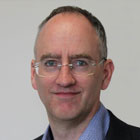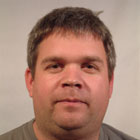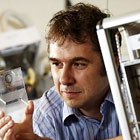The issue
Air pollution generates substantial costs to the economy through health costs, lost productivity and damage to crops and ecosystems.
The research
York researchers have significantly improved our knowledge of air pollution issues. Research into the emissions and atmospheric behaviour of two key classes of air pollutants - nitrogen oxides and volatile organic compounds - has been particularly influential.
Nitrogen oxides (NOx)
Research by Dr David Carslaw and Professor James Lee highlighted that emissions of NOX in the urban environment substantially exceeded the amounts used for pollution forecasting and policy setting.
Dr Carlsaw pioneered the use of remote sensing methods to evaluate the real-world emissions of NOX from cars driving on public roads. He has published some of the most globally influential papers on the discrepancies between diesel vehicle test cycle emissions standards and on-road emissions.
Professor Lee has complemented this work by developing the first top-down estimates of urban NOX emissions and identifying that private cars in central London contribute relatively limited amounts of NOX, relative to other diesel power users.
Volatile organic compounds (VOCs)
Research by Professor Alastair Lewis and Dr Jacqueline Hamilton identified that emissions of evaporative and unburnt diesel fuel were up to 70 times greater than assumed. They found that VOC emissions from the diesel fleet would impact on secondary ozone and aerosol formation.
Another study identified ethanol as the most abundant VOC found in UK urban air. This reflects changes in petrol composition, a reduction in hydrocarbon emissions from other sectors and increased use of domestic solvents.
The outcome
York research has influenced multiple areas of UK air pollution policy and helped to improve air quality by providing data, analysis and advice.
NO2 is now declining in many cities. In part, this is due to research from York shaping the actions of vehicle manufacturers and local and central government. Professor Lee and Dr Carslaw's work on NOx emission underpinned the introduction of the T-charge in London was included as technical evidence in the Volkswagen diesel engine emissions court case.
Professor Lewis and Dr Hamilton's insights into VOCs were reflected in the UK government's Clean Air Strategy as well as reports from the Chief Medical Officer and Royal College of Physicians.




